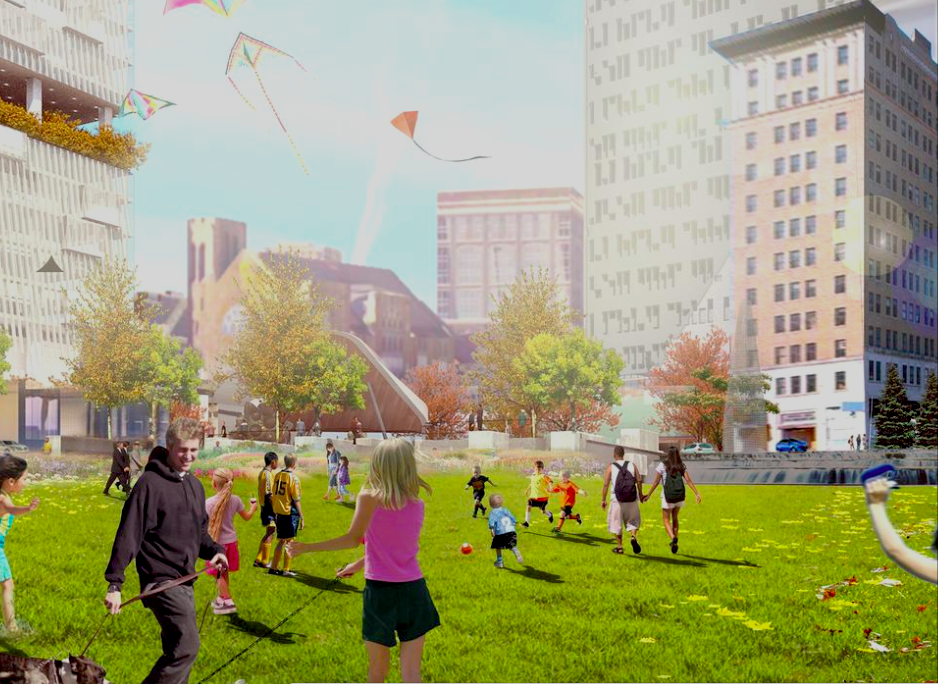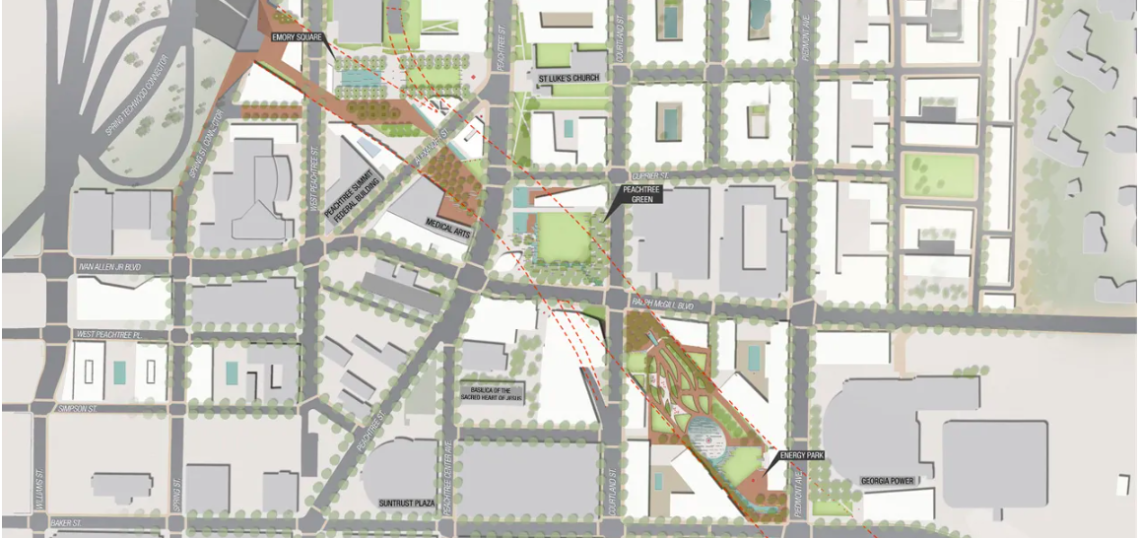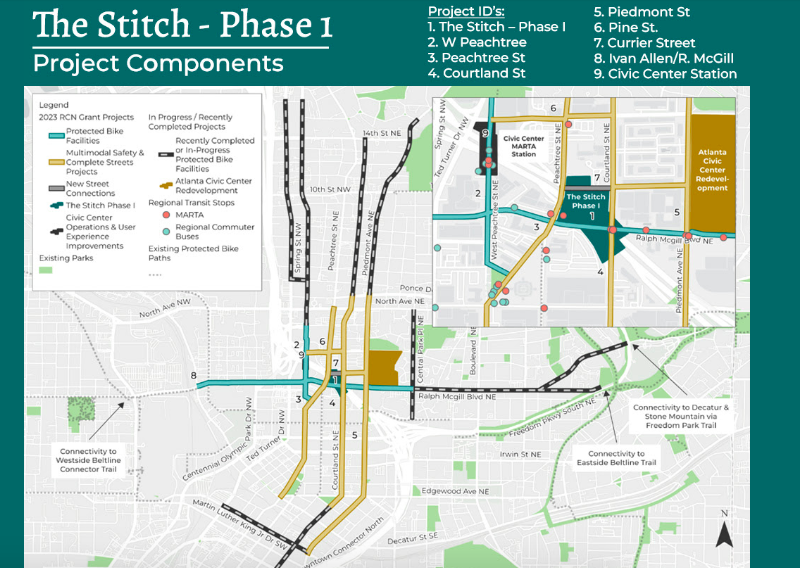In an announcement that City of Atlanta leadership is calling “monumental,” legislators from Georgia revealed today that more than $200 million in federal funding has been secured for two of the most ambitious transportation and recreation infrastructure projects in city history: Downtown’s highway-capping Stitch and the Atlanta BeltLine.
According to U.S. Sen. Jon Ossoff’s office, the “historic” federal funding will total $208 million, or enough to cover construction of the Stitch’s initial phase, plus pieces of a new multi-use pathway branching off the BeltLine for a project called the Flint River Trail.
Both projects are designed to help unite neighborhoods and boost alternate transportation options.
Ossoff made the announcement alongside two other champions of both projects at the federal level, Sen. Raphael Warnock and U.S. Rep. Nikema Williams, D-Atlanta. The grant funding is part of the fruits of a bipartisan infrastructure bill approved by Congress in 2021.
The lion’s share of funding, $157 million, will go toward funding phase one of the Stitch. That calls for up to 5 acres of new park space over the downtown Connector between Peachtree and Courtland streets, multimodal improvements for the area’s street network, aesthetic upgrades, and easier access to MARTA’s Civic Center bus and rail station.
The Stitch’s planning team applied for the $157 million in funding in the form of a FY23 Reconnecting Communities and Neighborhoods grant in September. Eventually, the Stitch’s scope calls for 14 acres of new public space spread across 3/4th of a mile, all intended to restitch neighborhoods torn apart by downtown freeway construction.
The project’s design phase kicked off last month and is expected to be finished this summer, to be followed by engineering. Stitch spearheads have previously said construction could start in 2026, pending funding.
Atlanta Downtown Improvement District officials say the phase-one funding will cover improvements to seven different downtown streets. Overall the funding will help downtown start realizing a dream that’s been percolating for 20 years, said A.J. Robinson, Central Atlanta Progress and ADID president, and Jack Cebe, Stitch development manager, in a joint statement.
 Depiction of a Stitch greenspace between several landmark and hypothetical buildings. Central Atlanta Progress; thestitchatl.com
Depiction of a Stitch greenspace between several landmark and hypothetical buildings. Central Atlanta Progress; thestitchatl.com
Meanwhile, $50 million will go toward helping build out an eventual BeltLine-Flint River Trail connection. That’s a project led by Atlanta Regional Commission to provide a link to both trails and hospitals, schools, job centers, and MARTA transportation in between.
According to the AJC, the $50 million will pay for construction of two trail sections: a 1.6-mile segment in East Point and another mile in Clayton County. Plans call for the Flint River Trail to eventually span 31.5 miles between the BeltLine’s Southside Trail and Lovejoy.
Williams, who passed legislation that funded the infrastructure grants in Atlanta, predicted the Stitch “will reclaim a massive part of our city from infrastructure that divided the Black neighborhoods of Buttermilk Bottoms, Bedford Pines, and Sweet Auburn,” per a statement. “And with a new connection to the BeltLine,” Williams continued, “we are increasing pathways to opportunity for communities that have historically been overlooked for federal investments.”
 As seen in winter 2018, the Stitch would cap this 3/4-mile section of the Connector with greenspace, from the Civic Center MARTA station to just east of Piedmont Avenue. Courtesy of Jonathan Phillips
As seen in winter 2018, the Stitch would cap this 3/4-mile section of the Connector with greenspace, from the Civic Center MARTA station to just east of Piedmont Avenue. Courtesy of Jonathan Phillips
...
Follow us on social media:
Twitter / Facebook/and now: Instagram
• Downtown news, discussion (Urbanize Atlanta)







